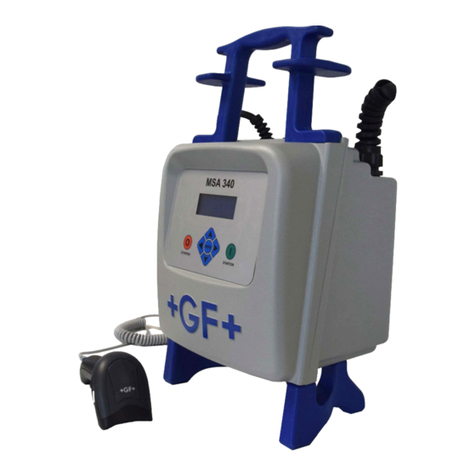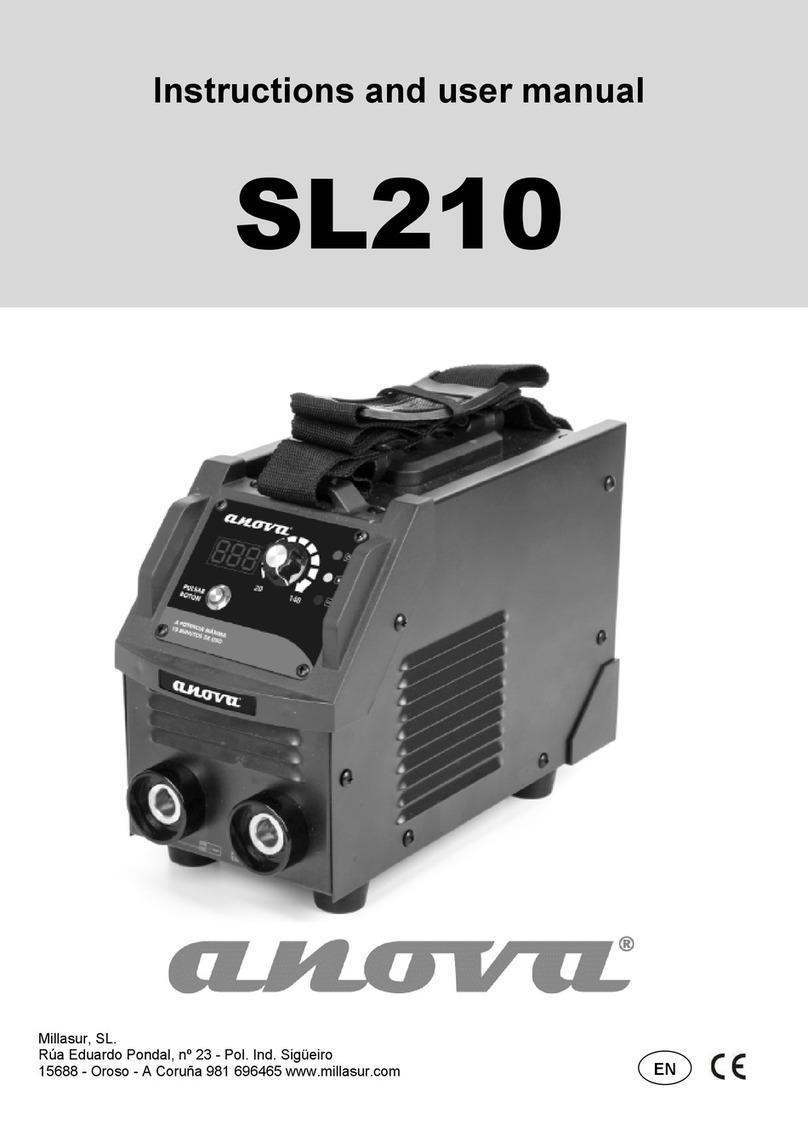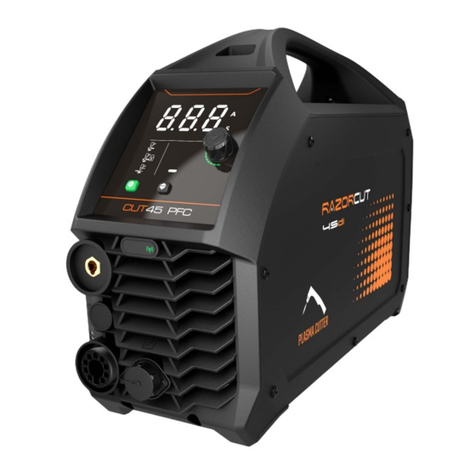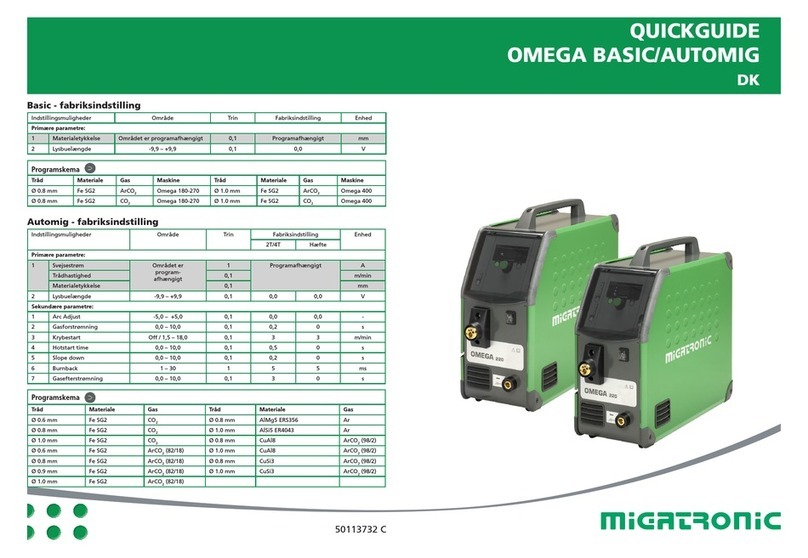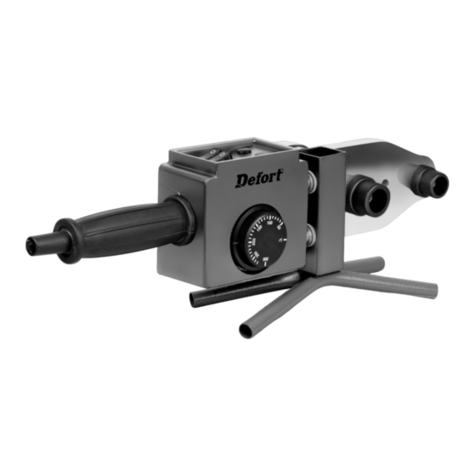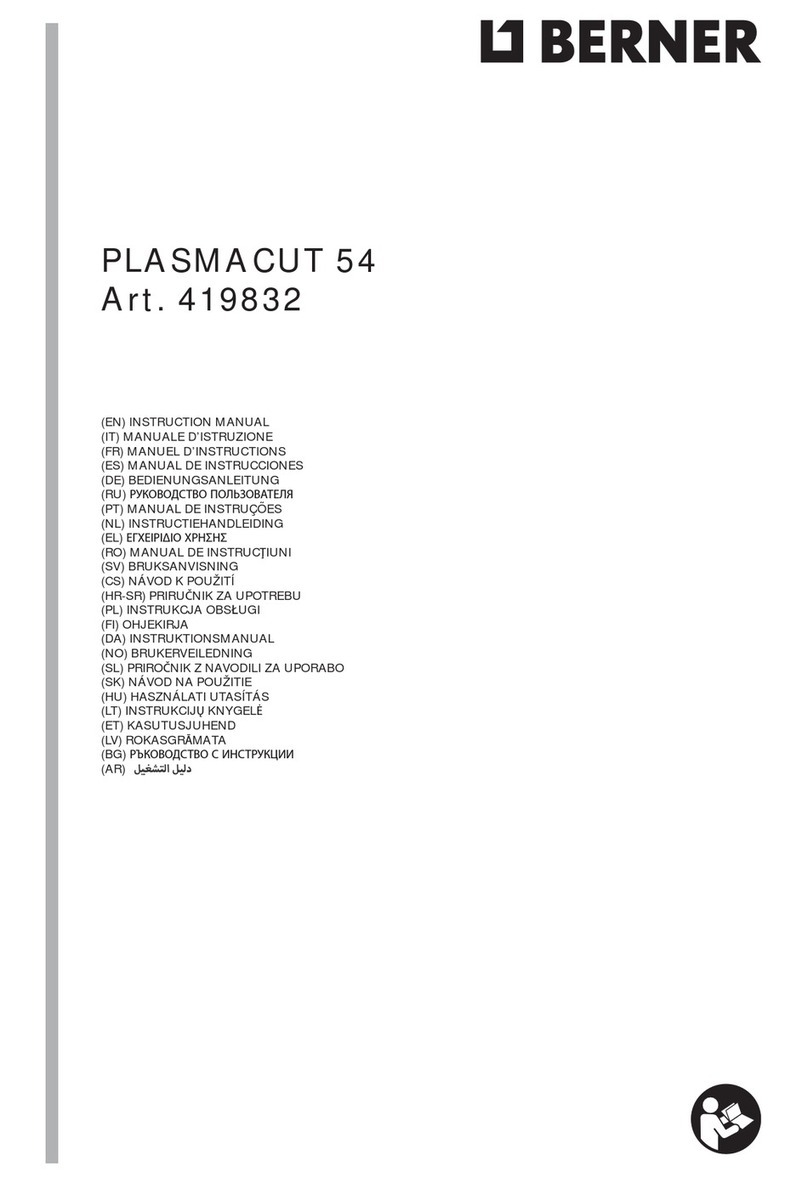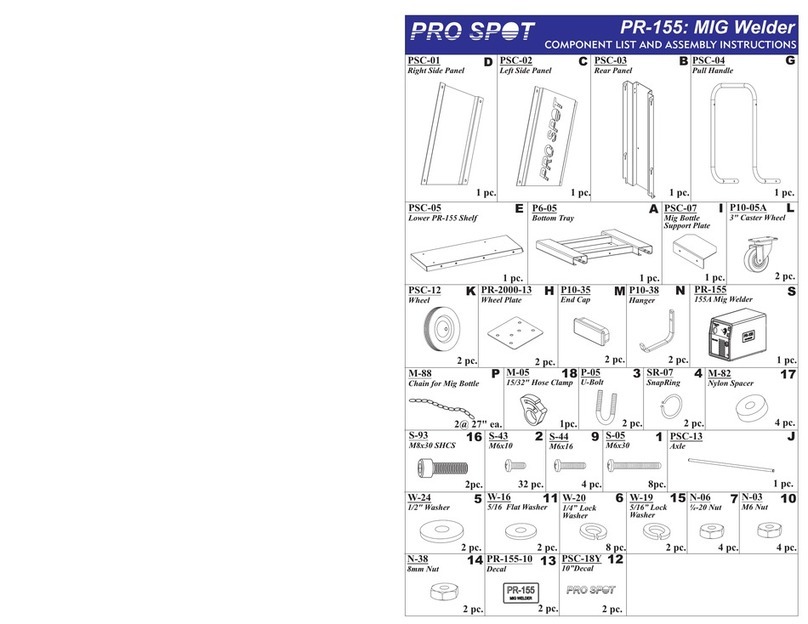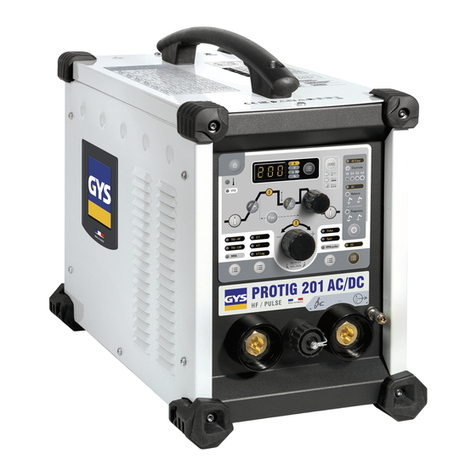
8
Moving parts can cause injury.
• Stay away from moving parts such as fans.
• Keep all machine doors, panels, covers, and guards in place.
HF RADIATION may cause interference.
• High frequency (HF) can interfere with radio navigation, security services,
computers, and communications equipment.
• Have only qualified persons familiar with electronic equipment perform
installation.
• User is responsible for having a a qualified electrician promptly correct any interference
problems resulting from the installation.
• If you are notified of interference by the FCC, stop using the equipment immediately.
• Have the installation checked and maintained regularly.
• Maintain doors and windows well-enclosed high-frequency source panels, keep spark
gaps in the correct position, and use grounding and shielding to minimize the possibility of
interference.
Arc welding pcan cause interference.
• Electromagnetic energy can interfere with sensitive electronic equipment, such
as computers and computer-operated equipment such as robots.
• Make sure all equipment in the welding area is electromagnetically compatible.
• To reduce potential interference, keep welding cables as short as possible, close together
and low, such as on the floor.
• Locate the welding operation 100 meters from any sensitive electronic equipment.
• Make sure this welding machine is installed and grounded in accordance with this manual.
• If interference still occurs, the user must take additional measures, such as moving the
welding machine, using shielded cables, using line filters, or shielding the work area.
2. GENERIC PRECAUTIONS
Welding is a fabrication or sculpting process that joins materials, usually metals or
thermoplastics, by using high heat to melt the parts and allowing them to cool causing
fusion. Arc welding uses an electric arc to melt the work materials as well as the filler
material (sometimes called the welding rod) to weld joints. Arc welding involves connecting
a work lead to the welding material or other metal surface. Another wire known as electrode
wire is placed over the material to be welded. Once the wire moves away from the material,
an electrical arc is generated. The arc then melts the workpieces together with filler material
that helps bind the pieces together.
It should also be noted that in addition to proper electrode size selection, it is very important
to keep the welding cable and cable connections in good condition. Cracks, cuts, worn
spots, etc. in the welding cable can reduce its current-carrying capacity and create
dangerous spots. In addition, worn or frayed cable connections to the work clamp, lugs, or
twist-lock connectors can also decrease current-carrying capacity and create hot spots. All
worn, frayed and damaged sections must be repaired immediately for proper operation and
to minimize any potential safety hazards.

